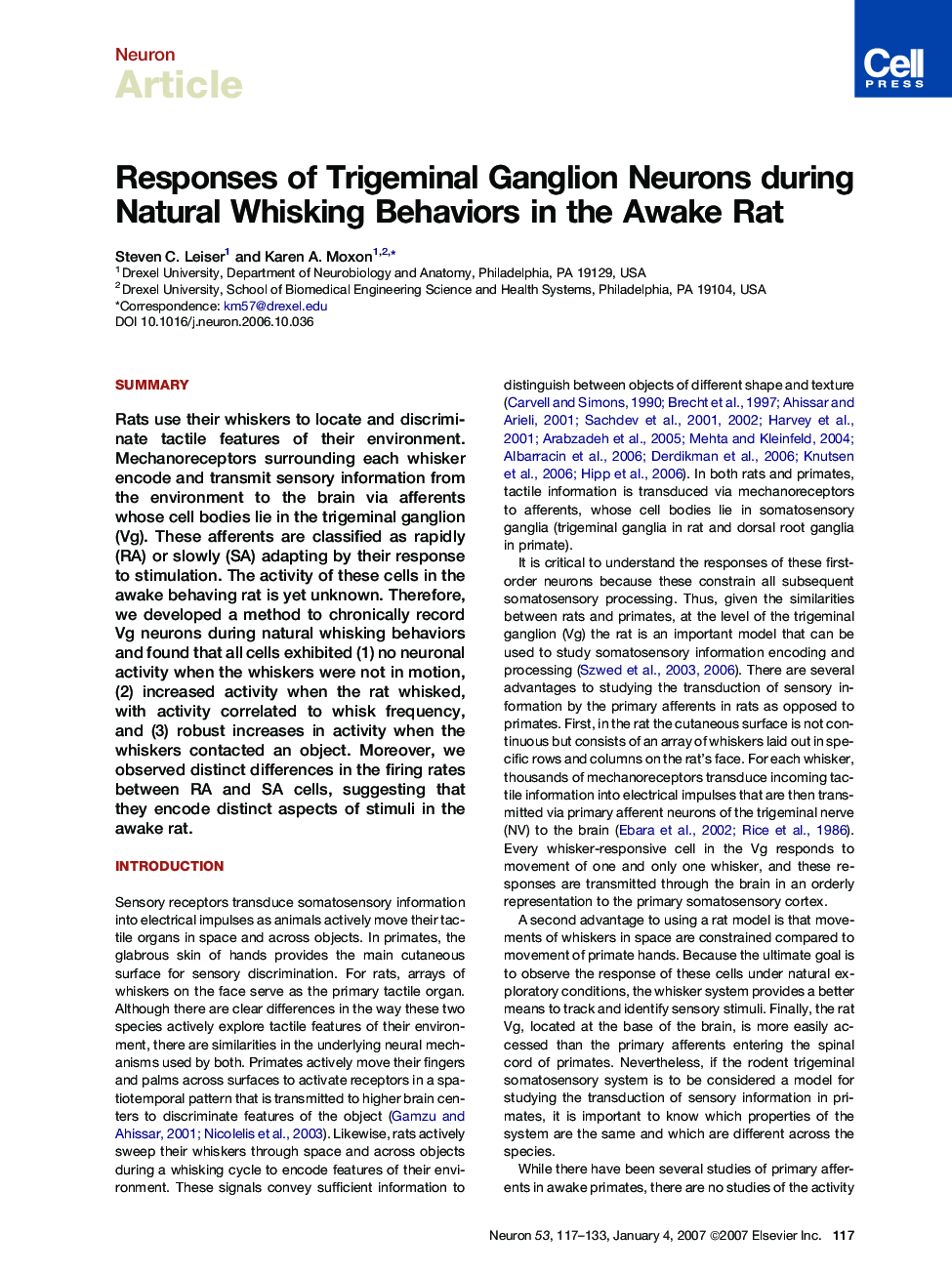| Article ID | Journal | Published Year | Pages | File Type |
|---|---|---|---|---|
| 4323240 | Neuron | 2007 | 17 Pages |
SummaryRats use their whiskers to locate and discriminate tactile features of their environment. Mechanoreceptors surrounding each whisker encode and transmit sensory information from the environment to the brain via afferents whose cell bodies lie in the trigeminal ganglion (Vg). These afferents are classified as rapidly (RA) or slowly (SA) adapting by their response to stimulation. The activity of these cells in the awake behaving rat is yet unknown. Therefore, we developed a method to chronically record Vg neurons during natural whisking behaviors and found that all cells exhibited (1) no neuronal activity when the whiskers were not in motion, (2) increased activity when the rat whisked, with activity correlated to whisk frequency, and (3) robust increases in activity when the whiskers contacted an object. Moreover, we observed distinct differences in the firing rates between RA and SA cells, suggesting that they encode distinct aspects of stimuli in the awake rat.
